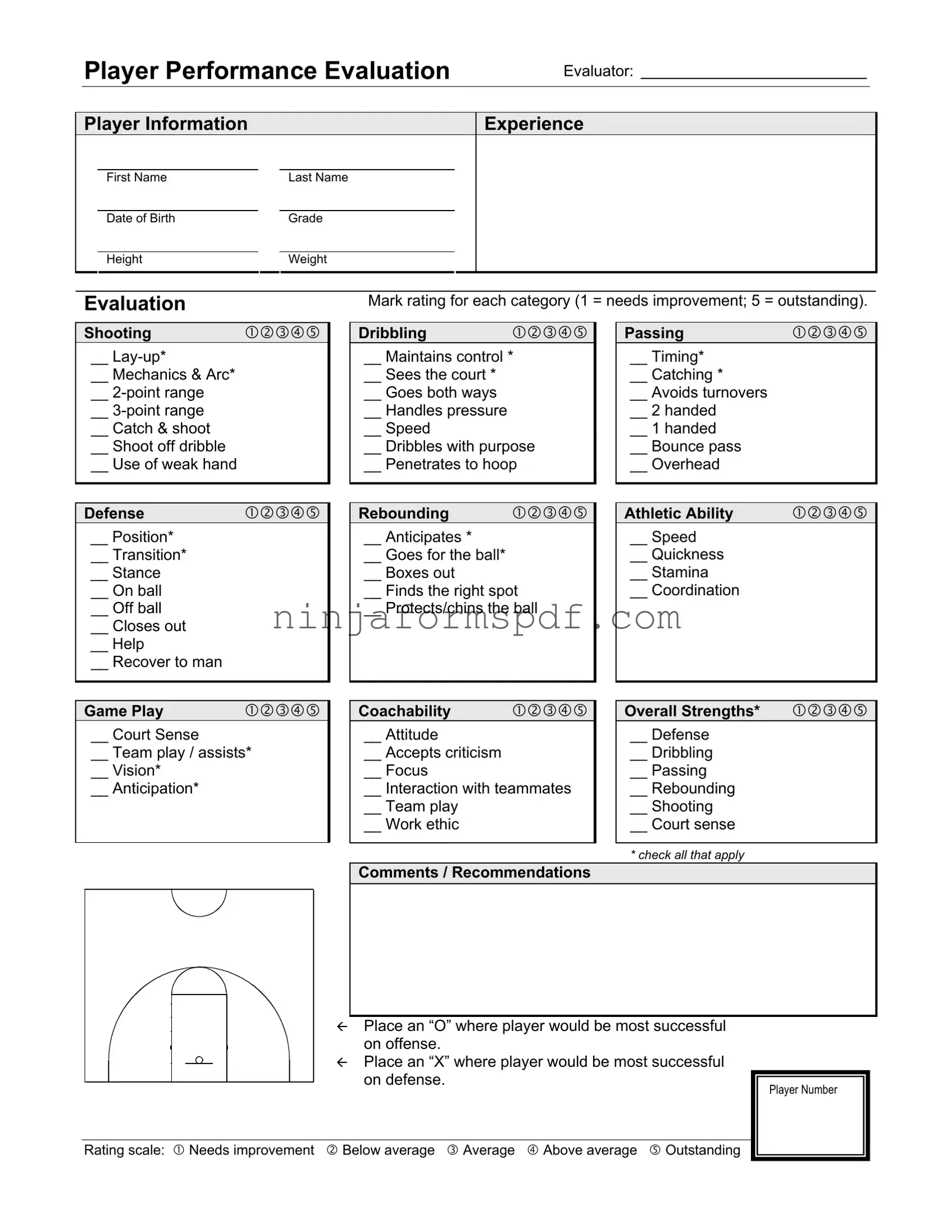What is the purpose of the Basketball Evaluation Form?
The Basketball Evaluation Form is designed to assess and document the performance of basketball players. By evaluating various skills such as shooting, defense, dribbling, rebounding, passing, athletic ability, game play, and coachability, coaches and evaluators can determine areas of strength and opportunities for improvement. This process aids in the development of the player's overall game and can be used for making strategic decisions in team formation.
How is the player rating scale interpreted on the form?
The player rating scale on the form ranges from 1 to 5, with each number corresponding to a specific level of proficiency. A rating of 1 means "needs improvement"; 2 indicates "below average"; 3 suggests the player is "average"; 4 signifies "above average" performance, and a rating of 5 is classified as "outstanding". This scale helps evaluators quantitatively measure a player's abilities across various categories.
Can you explain what the asterisks (*) next to certain categories mean?
Asterisks next to certain categories on the Basketball Evaluation Form highlight specific skills considered crucial or foundational for a basketball player. These marked categories require special attention during the evaluation process, signaling areas that are particularly important for a player's development and success on the court.
What does placing an "O" or "X" on the form denote?
Placing an "O" or "X" on the Basketball Evaluation Form provides specific tactical recommendations for a player's placement on offense and defense, respectively. An "O" suggests where a player would be most successful on offense, while an "X" indicates the ideal defensive position. This guidance helps coaches strategize player positioning and roles based on their abilities and performance evaluations.
How often should a player be evaluated using this form?
Frequency of evaluations may vary depending on the level of play, competitive season, and development goals. However, it is generally recommended to evaluate players at least twice per season - once at the beginning to identify areas of focus and again towards the end to assess improvement and adjust training accordingly. Regular evaluations can provide ongoing feedback and motivation for players to continue developing their skills.
Is the form suitable for all age groups and levels of play?
Yes, the Basketball Evaluation Form is designed to be versatile and applicable to a wide range of age groups and levels of play. The comprehensive nature of the form allows for specific skill assessment that is relevant to both younger players learning the game and more advanced players honing their skills. However, evaluators may choose to emphasize different sections based on the player’s age and competitive level.
How should evaluators approach category ratings that do not apply to a player’s role on the team?
If certain evaluation categories do not apply directly to a player's role or position, evaluators should focus on assessing skills and attributes that are relevant to the player’s contributions to the team. It’s important to provide a balanced assessment, emphasizing both strengths and areas for improvement while considering the player's specific role. For non-applicable categories, evaluators can note them as such and concentrate on areas of performance and skill that enhance the player's effectiveness in their positions.

